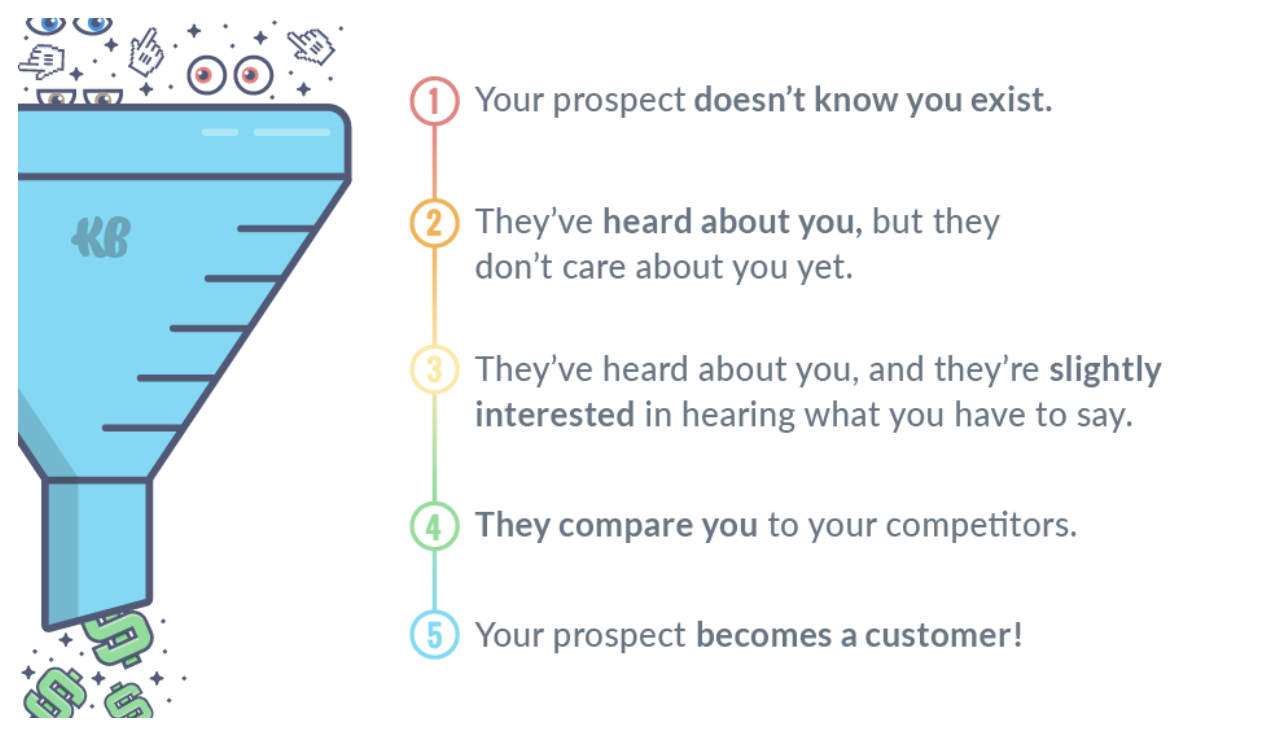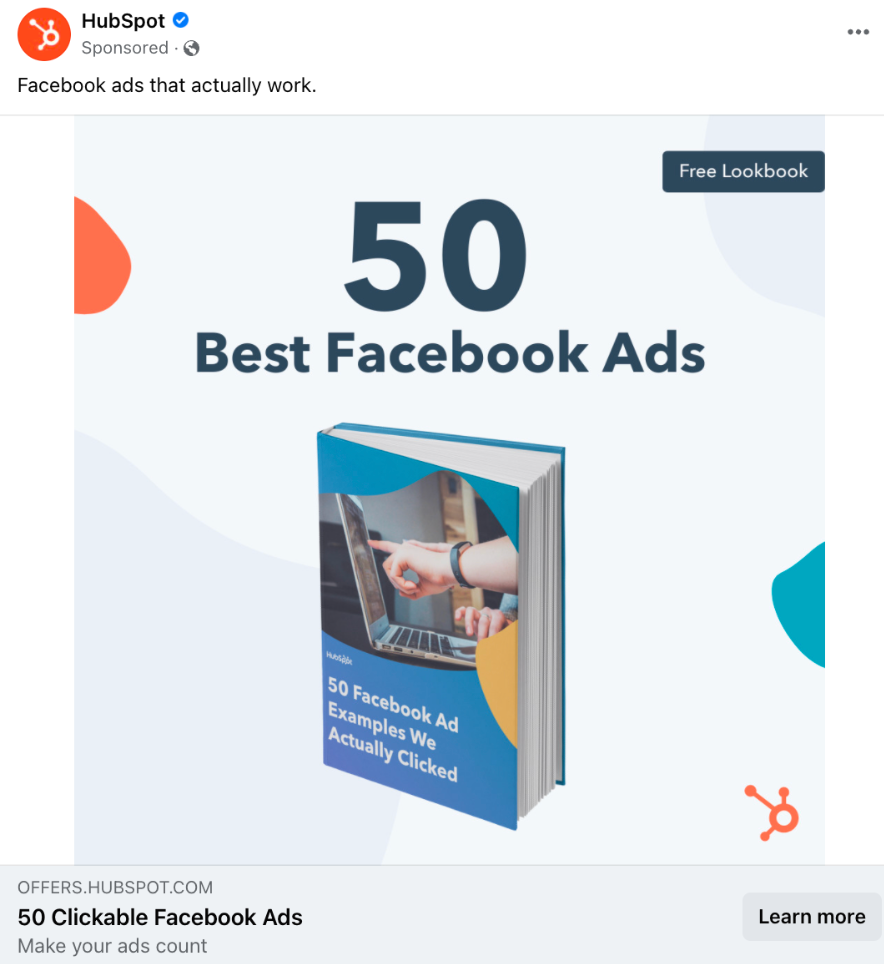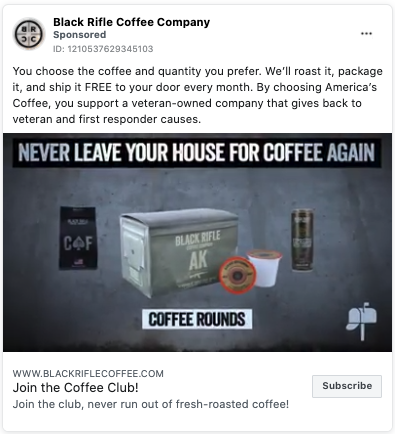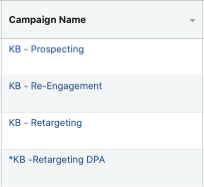Launching a new brand with pay-per-click (PPC) or paid advertising isn’t easy. And in a pay-to-play arena like pay-per-click advertising, it’s crucial that you don’t spend too much time working through the learning curve to avoid budget burn and maximize your profits/returns as fast as possible.
And, of course, in an industry built on split testing and incremental optimization, launching your PPC campaign(s) and immediately seeing success isn’t always the case.
If only there were a way to start on the right foot instantly…
At KlientBoost, we’ve worked with many companies in their first year of business (as well as some of the largest SaaS companies and educational institutions). With all that experience, we’ve cracked the code on how to run a PPC campaign and set businesses up for long-term success.
As the digital advertising world expands to new platforms, our only strategy can’t be to bid on broad match or phrase match keywords. We also can’t limit ourselves to just running search ads on search engines such as Google Ads (formerly Google AdWords) or Microsoft Ads (formerly Bing Ads).
We need to be more creative and reach our customers on a multitude of platforms, especially when launching a new PPC brand and running campaigns.
So, let us introduce you to the essentials of starting out with your brand, plus our 7-step system to running a successful PPC campaign that scales.
Let’s get going.
Get brand new PPC strategies straight to your inbox every week. 23,739 people already are!
Doing your brand homework
When entering the digital marketing world, one of the most essential factors in driving success starts with the brand image. When most people think of a brand image, they think of it as a logo. But it's more than that.
Brand image is the potential consumers’ perception of the product or service.
For example, let’s look at a company that combines three of my favorite things: coffee, America, and giving back to our first responders.
The Black Rifle Coffee Company is a veteran-owned coffee company that sells high-quality coffee and donates a portion of its sales back to veterans, law enforcement, and first responders.
Based on that sentence alone, I’m sure you already have an idea about what their brand and products might look like.

They launched their social media accounts in 2014 and have since grown a loyal following reaching 1.7 million.
Now, that didn’t happen overnight. But it did happen because they knew their target audience and had a clear brand image and strategy.
Who they are as a company is very clear across all channels—organic and paid.
Keep this in mind as we dive deeper into the paid digital advertising side of marketing.
Building your new brand
How do you incorporate your brand image into your paid advertising? Well, that’s where this blog post gets really juicy.
The main focus of your digital advertising strategy should be centered around the company’s unique value proposition (UVP).
Your unique value proposition, also known as a unique selling proposition (USP), is a clear statement that describes the benefit of your offer, how you solve your customer's needs, and what distinguishes you from the competition.
This UVP should define the backbone of your advertising strategy and be consistent from the impression to the recognition stage.
The benefits you offer, how you solve your customer’s needs, and what distinguishes you from the competition are the keys to turning prospects into customers.
To get them to convert, we need to position the company, homepage, ads, and landing pages to answer their questions so that they have no doubt this is the company they want to buy from.

It’s important to note that just because we create ads, landing pages, and a couple of campaigns, it doesn’t mean that leads and orders will come bursting through the door right away. Like building a small business, nurturing consumers down the digital funnel takes time.
We’re starting from the very beginning and launching a new brand with PPC here, so we’ll be working towards nurturing people to that final stage to become paying customers.
But we need to focus on the mini-goals and micro conversions to get to that point. This is because not every person is going to buy a product or commit to a contract after the first interaction with an ad.
Those mini-goals could include
- interactions
- click-through rate (CTR)
- website traffic
- add to carts
- email opt-ins
- content downloads
- webinar participants
- time on site
With new brands, it may take a bit longer to establish the trust in your audiences necessary to fill that funnel up to the brim.
But given enough time, testing, and optimizations, you’ll soon be able to capitalize on how you’ve grown this new brand and scale it into a PPC conversion machine.
The 7 steps to scaling a brand from scratch
It’s not easy to start from nothing in the PPC world (where the size of your ad budget can make or break your campaigns).
But that doesn’t make it impossible.
Let’s take a look at how you can launch your new brand with PPC management and get out of the gate successfully.
1. Strategy
Too many companies have come to us with the assumption that slapping together a marketing strategy consisting of the classic branded, non-branded, and remarketing campaign trio will instantly bring in leads and purchases for a brand new product or service.
That might work for a company that’s well known and established both online and off. But for new brands, that’s not always the case.
That’s why digital marketers need to create a strategy based on a full funnel. Check out the marketing funnel below, for example:

As you can see, at the top, we have a large market that doesn’t know the brand exists at all. But through PPC marketing, we can nurture these potential customers down the funnel and turn them into paying customers.
It’s definitely a process. You don’t get to skip steps 2–4 and expect your customers to randomly appear at step 5, money in hand.
2. Asset creation
Because each part of the funnel is so unique to different user mindsets, you’ll need to create distinct campaigns, each with a warchest of ad assets.
For each stage of the funnel, it's crucial to have a different offer or ad copy message. For a lead generation business, having offers such as a free trial, brochure download, free webinar, guide, information kit, or a whitepaper can help nurture leads down the funnel.

For eCommerce clients, content offerings are a bit trickier because we’re trying to make the sale as soon as possible.
Aside from answering the questions a customer might have before they’re willing to make the sale, here are a few suggested offerings to get products into the hands of consumers faster:
- discount on first order
- giveaway entry
- free gift with purchase
- free shipping
- flash sale
- referral code
- discount on subscription
All of these offerings are incentives that lower the threat level of making a purchase. The lower the threat level of the offer, the better chances you’ll have at conversion.
Bonus idea: Many eCommerce businesses find success in offering free quizzes in their ad assets. These quizzes typically introduce people to the right product at the completion of the quiz, making it easier for customers to find what they’re looking for.
For example, makeup company Il Makiage sends some of their top-of-funnel ads to a quiz to help you determine what type or shade of products you need and which are best for your skin.

3. Picking platforms
Picking the right platform mix is one of the most crucial steps in launching a new brand with PPC.
The great part about digital marketing in the 21st century is the abundance of platforms to market on. However, you don’t need to advertise on every platform in order to be successful.
For reference, here is a list of platforms I typically choose from:
Now, I’m sure there are a few digital advertising platforms on that list that you didn’t think to market on right off the bat. But depending on the business, industry, and target market, they might make perfect sense.
Typically, the platforms we like to start with are Google Ads for SEM (search engine marketing) and Facebook for social media marketing. Depending on the business and target market, we might add Pinterest, LinkedIn, Twitter, Capterra, Snapchat, or TikTok.
If we were to run ads on all platforms, here’s a quick rundown of what campaigns I’d run (dependent on the company):
- Google Ads: Branded/Non-Branded/Remarketing
- Microsoft Ads: Branded/Non-Branded/Remarketing
- Facebook/Instagram: Prospecting/Remarketing/Re-Engagement
- Pinterest: Prospecting/Remarketing
- LinkedIn: Prospecting/Remarketing
- Twitter: Prospecting/Remarketing
- Capterra: Prospecting
- Snapchat: Prospecting/Remarketing
- TikTok: Prospecting/Remarketing
This isn’t a picture-perfect recipe for success. But in most cases, when launching a new brand with PPC, some combination of the above should get you started in the right direction.
The recipes we create for our clients depend on Google Ads search volume and demand. If there is demand, we could launch on Google Ads alone or with a combination of the above categories.
Most likely, there won't be a high demand for branded search keywords on Google Ads with new businesses, so that’s where we work to create that demand on other platforms.
I would launch a prospecting, re-engagement, and remarketing campaign on Facebook to create a “buzz” for the business and then leverage branded and non-branded search campaigns on Google Ads.
Pro tip: When you create a non-branded search campaign on Google Ads, be mindful of the PPC keywords and match types you choose. An exact match keyword will most likely spend less than a broad match keyword. This is where your ad spend comes into play. We'll dive more into that later.
Again, just make sure your PPC ads in each platform provide a clear brand image and highlight your UVP.
Take a look at this PPC ad example from Black Rifle Coffee Company, which provides clear messaging and highlights: the ease of ordering, free shipping, veteran-owned, and giving back to first responders.

4. The campaign build
Here’s where the fun begins—the campaign build.
For each platform, each campaign should play a different role in the marketing funnel.
Let's look at the big two for starters: Google and Facebook.
Once you get an idea of how campaign builds go for these two, it’s a lot easier to start building on other platforms, where the process will be fairly similar.
Google Ads campaign builds
I keep my Google ad campaigns to a minimum to begin with. I run a Google search branded campaign and a non-branded campaign that use our SKAG (single keyword ad group) technique or the new and improved version of keyword tapering.
In addition to that, I run a remarketing campaign utilizing display ads to target all website visitors, excluding people who have already converted. (If your Google Ads account’s just been born, then you might not have a large enough retargeting list to do retargeting just yet. Wait patiently.)
Then, the ad copy comes into play. This is one of the most important pieces of this puzzle.
So, when I craft my copy, I make sure to do my research. I'll start by doing keyword research with Google’s keyword planner and/or look into search terms (if there are any).
I’ll also look into Google Analytics to see which webpages have the most organic traffic currently and pull copy inspiration from those.
l create my Headline 1 ad copy to be specific to the keyword we are bidding on, use my Headline 2 to highlight the UVP of the business, and use the Headline 3 to state a clear call-to-action (CTA).
I use my description copy and ad extensions to answer the questions users might have and drive home the major reasons they should choose to buy.
Keep in mind that when a new brand is starting out, there isn’t always excess money in the bank to be able to support the highly competitive landscape of non-branded and competitor keywords. It's always best to make the most of what you have in the beginning.
So when looking into non-branded keywords, choose ones with higher intent and phrase or exact match types rather than ultra-broad keywords that will spend heartily and skyrocket cost-per-click (CPC) but not convert.
Facebook Ads campaign builds
I like to use Facebook as my main platform and driver of brand awareness, sales, and leads when I’m scaling a brand from scratch.
Facebook better allows new businesses to build a larger target customer base through audience targeting and a wide array of social media ad placements (while simultaneously pushing our campaign goals of product sales or leads).
I set all of my campaigns up using Facebook’s Power 5 to ensure they will run most optimally with Facebook’s algorithm.
From there, I will set up a prospecting campaign, a remarketing campaign, a re-engagement campaign (targeting people who engaged with the Facebook page or posts), and a dynamic product ad (DPA) campaign for eCommerce businesses.

I set up each campaign to have specific ads and copy for each stage of the funnel that the campaigns target.
My prospecting campaign will have informative ad copy that describes the product or service and the UVP, ideally coupled with a low-threat offer like a quiz or free download.
My re-engagement campaign will have different ads that are slightly more specific about the product or service, explaining the benefits. It’s a good idea to incorporate case studies or reviews into ads at this stage and try out slightly higher-threat level offers, like a free trial or newsletter signup.
The remarketing campaign typically has another set of images and copy geared around much more threatening offers and messaging, like “Get a free demo,” “Don’t forget about the products in your cart,” or “Enjoy 10% off.”
I also make sure to dark post ads in one ad set to other ad sets to ensure that the social proof builds faster on our posts and improves the overall performance of campaigns.

I can’t stress enough how important it is in the early stages (and all stages, really) to get people to buy the product or service you offer and make them fall in love with it so that they’ll become brand ambassadors for you.
We’re not talking about Instagram influencers talking about your products (although that would be great advertising). We’re talking about having average consumers writing reviews for you or talking to their friends, coworkers, or colleagues about the product.
They will start to create a natural buzz and get more people interested. And just as dark posting puts a bit of the social proof behind your advertising brand, some real-life social proof will put even more fuel in your conversion engine.
5. Launching your PPC campaigns
Once you have all campaigns built, it’s time to enable the campaigns and get your initial data and metrics.
Typically, we will see that most of the traffic and interactions will come from Facebook.
Initially, we tend to see some consumers convert in the early stages of running ads, but a majority might be slow to convert—and that’s expected.
That’s why we did our due diligence and created a marketing funnel that will nurture the initial leads into paying customers.
Your prospecting campaign is working at the very top of the funnel, gathering a broad audience who would have a potential interest in the product/services.
As more people have started visiting the website, that will populate website visitor audiences. It’s important to create audiences for website visitors and for people who have converted.
When creating remarketing campaigns, I set my audience to target website visitors from the past 30 days and exclude people who have converted.
That audience will then start to receive remarketing ads on both Facebook and the Google Display Network, which will help nurture them down the funnel toward the consideration phase.
6. Branded demand generation
Once potential customers are in the consideration phase, they will now start to actively search for your brand (if they haven’t already converted), and Google Ads brand traffic should start to increase.
It’s essential to make sure the ads are optimally built with the proper site links and CTAs to ensure that consumers have avenues to get their questions answered from the initial impression of the ad.
From there, it’s all a matter of well-prioritized PPC split testing and landing page optimization to start improving your performance.
7. Campaign upkeep
The upkeep of the campaigns is one of the most important things you can do to ensure the success of your campaigns moving forward.
Here is where the heavy optimization process comes into play.
In Google Ads, we now need to keep a close eye on search terms and add negative keywords to our ad groups or campaigns.
On the Facebook side of things, campaigns might not initially receive much traffic in terms of clicks to the website. In that instance, you’d need to pivot your prospecting campaign to optimize for traffic (or conversions, if you have a very low-threat offer to try) to get more people to the website.
For eCommerce businesses, once you see more people completing micro conversions such as viewing content, longer time on site, or add-to-carts, you can change the ad set’s conversion event settings to the unique stages of your micro conversions.
For lead gen businesses, you might have trouble getting high-value leads to the end of the funnel if your prospecting campaigns don’t initiate people down the start of the funnel well enough.
That’s when you introduce a low-threat offer like a whitepaper download (that requires absolutely minimal information from a user to access, like a name and an email) or get people to consume some of your juicy blog content.
If you’re still having trouble scaling conversions and lowering your cost-per-conversion (CPA), try digging for the reason why on your landing page.
Bonus idea 1: Try placing a Hotjar poll on your landing page asking specific questions as to why they are not making a purchase or requesting a demo.
Bonus idea 2: Try an exit intent pop-up that has a content offer such as a guide, information kit, case study, or a webinar to give them more information and help answer more questions they might have before they leave the page.
On top of the usual campaign upkeep, updating ads to combat ad fatigue is also key to maintaining a successful launch of any new brand in PPC advertising.
Using new imagery and/or messaging is the key, especially on Facebook and other social media platforms. But beyond that, testing more than one ad message with your creatives is also important.
We like to refer to this as having a fully stocked Warchest of Ads.
What should your warchest include?
Well, every type of offer or info that your potential lead/customer might be interested in, such as
- benefits
- features
- user testimonials
- main FAQs (frequently asked questions)
- competitor comparisons
Taking the winning set of ad copy/creatives and testing new headlines with them will help you continue to drive the needle on the paid search side.
Other than that, it’s a matter of optimizing your bid adjustments, bid strategies, and simply keeping your Google Ads and other ad platforms nice and tidy.
Key takeaways
If you’re looking to launch a new brand with PPC, it’s important to remember the stability that creating a full-funnel strategy can bring to scaling a brand from scratch.
As you learned in this article, a solid PPC strategy across multiple platforms will help you drive sales and lead gen at scale (given enough time and enough care).
And, if your funnel is built well, it will help you get in front of your target market with the right message at the right time (and in the right place).
By now, you should have a good idea of how to run a PPC campaign. So, are you ready to get your brand off the ground?
If you feel like you need to do a bit more research first, especially when it comes to making solid ads, then check out our article on PPC ad copy.
